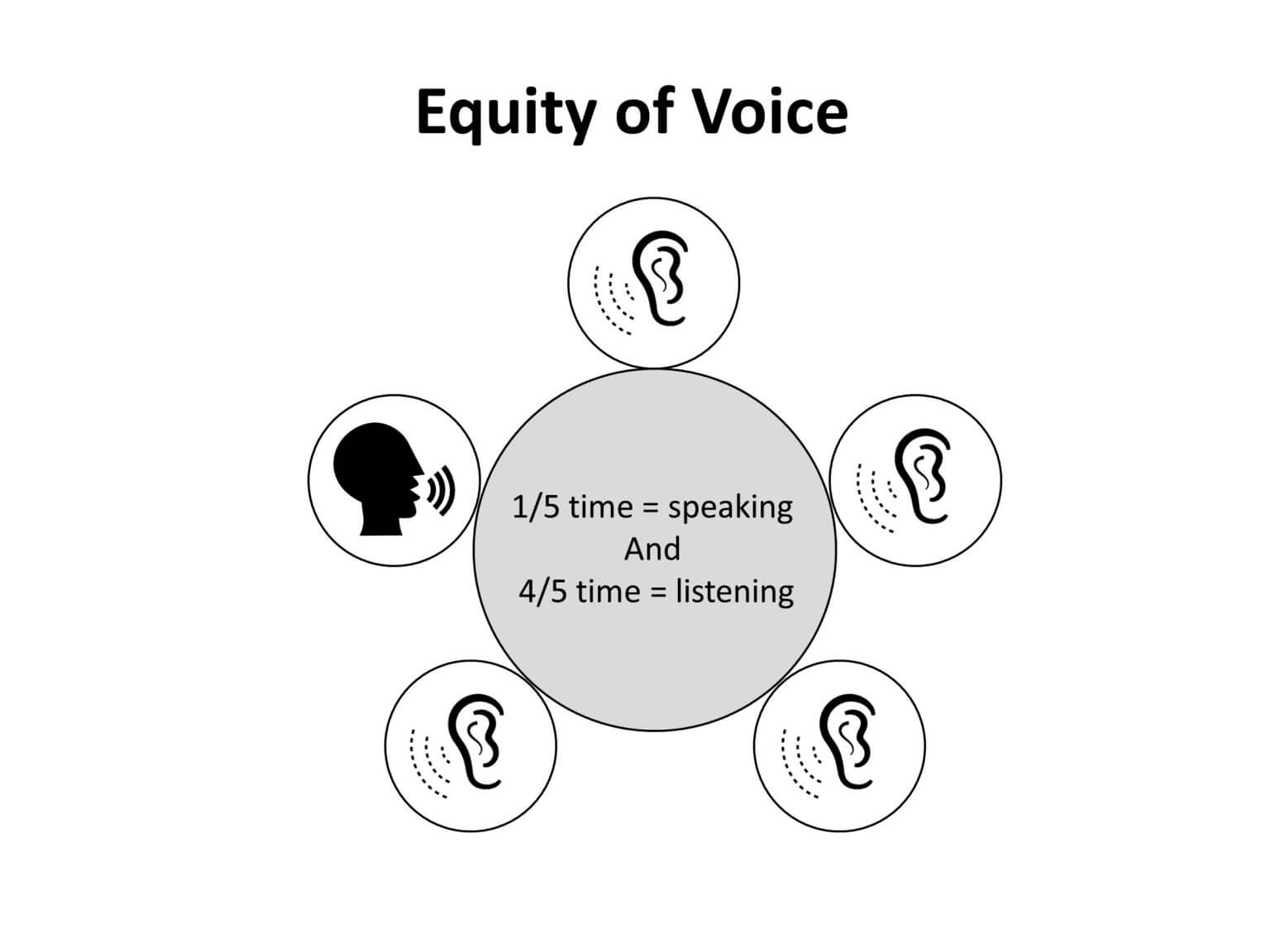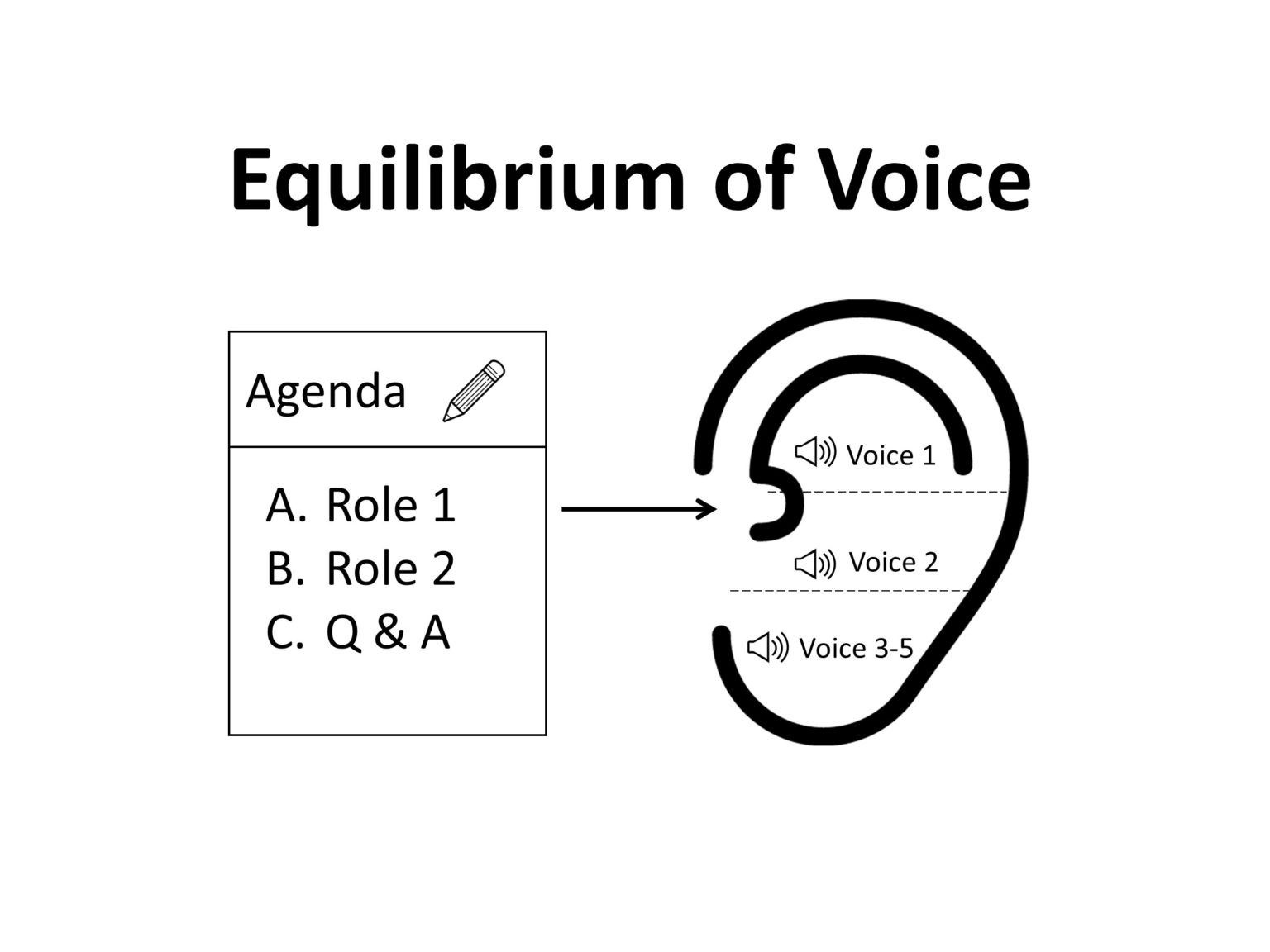Video Communication Etiquette
While video conferencing makes remote communication more realistic, tried and true communication practices can help you get the most out of any online communication effort. One strategy for team communication is called “Equity of Voice,” in which each member of a meeting is encouraged to have an equal amount of time to speak. Barry Moline, the author of Connect, says the secret to powerful connections comes down to four basic communications strategies.
#1: Share personal stories
Sharing personal stories helps individual team members better understand their peers. Personal stories foster the relationship-building process which is foundational to team communication. Spend a few minutes at the beginning of each meeting to help team members build relationships by sharing personal stories. Also, weave personal stories and anecdotes into key points in the meeting where helpful; they can often help reinforce key messages and build retention.

#2: Equity of voice
Achieving equity of voice requires a conscious effort to give each meeting member an equal opportunity to speak during the meeting. For example, in a five-person meeting, each member of the team would speak one-fifth of the time and listen four-fifths of the time. The listening side of the equity of voice is what makes it effective.
#3: Assume positive intent
To help ensure productive meetings, learn how to assume positive intent from others. This assumption helps set the meeting up for success by focusing on what you truly have control over — yourself. Too often, the “not invented here” barrier and the “transfer barrier” prevent meeting attendees from productive collaboration. Avoid these barriers by encouraging the assumption of positive intent which builds a bridge for communication that might not come naturally.
#4: Value persistence
Anything worthwhile takes time, dedication, and persistence. Once managers identify collaboration projects with significant value to the organization, they need to keep a close eye on team progress and follow-through. Some team members may lose focus, skip important meetings, or come to meetings unprepared. Managers can help by identifying people who can serve as collaboration project leaders. In an upcoming chapter, managers will learn how to use social facilitation to increase productivity and accountability to help employees effectively collaborate on projects.

equilibrium of voice
Equilibrium of Voice
Meeting leaders may embrace a new idea I call “Equilibrium of Voice” to push collaboration projects in a positive direction. Equilibrium of voice is a communication strategy that attempts to maximize meeting performance based on goals set in a meeting agenda. A meeting with a perfect equilibrium of voice optimizes the most relevant speakers of a group based on the established agenda and the participants’ roles in the overall group. It’s almost impossible for meetings to achieve equilibrium of voice without a clear agenda.
Equity of voice can be ideal for team collaboration where an agenda is in the process of being created and individual roles have yet to be defined. During the early stages of collaboration projects, everyone needs to be heard especially during crucial team-building exercises. But once a team has established an agenda, subsequent meetings will benefit from an equilibrium of voice that offers subject matter experts additional focus based on the agreed-upon agenda.
How to get there
Teams can leverage the equilibrium of voice by assuming all team members have positive intent. For example, a thoughtful question may only take a minute to ask but reviewing potential solutions may take a specific team member the majority of a meeting to work through potential answers. Similarly, achieve equilibrium of voice in a webinar-style presentation by offering subject matter experts time to present their ideas before asking questions. Meeting participants can ask questions and receive feedback through the methods decided on the meeting agenda. Meeting hosts should decide ahead of time how to accommodate meeting participant questions and feedback. Subject matter experts are resources that teams rely on to remain informed about subjects they don’t have the time to pursue on their own. Meeting leaders need to remember that subject matter experts are an essential element of collaboration.
Create a detailed agenda
Another way to achieve equilibrium of voice is to establish team member roles and align those roles inside of a detailed meeting agenda. Meeting hosts can increase productivity by structuring an agenda that helps all parties understand the roles of team members who have been invited to the meeting. A good meeting host aims to achieve equilibrium of voice between all meeting participants so that everyone can gain the most value out of the meeting.
| Collaboration Meeting (Equity of Voice) | Presentation Meeting (Equilibrium of Voice) |
|---|---|
| Team collaboration meeting | Expert webinar presentation |
| New project brainstorming | Weekly team update meeting |
| New employee onboarding | Employee performance review meeting |
| Inter-departmental collaboration | New product launch update |
| Educational round table | Thought leader fireside chat |
Presentation meetings such as webinars, new product launches, and fireside chats, do not require equity of voice because most meeting participants come prepared to learn and absorb new information. Collaboration meetings where teams are brainstorming often benefit from taking the time required to achieve equity of voice for all meeting members. At the core of both strategies, engaged learning is the key to workforce development. In the next chapter, you will learn how to enhance meeting experiences to increase educational and entertainment value.
More on Online Meetings
- Get The Online Meeting Survival Guide for free here
- An introduction to Online Collaboration Software here
- Learn about the history of Online Communications here
- Check out these essential ideas for online communicators here
- Read out complete guide to Zoom Video Conferencing here
- Learn how to organize your companies collaboration channels here
Get More Out of Your Meetings
- Learn when to collaborate, and when not too in this blog post here
- Read about four strategies for hosting more productive online meetings here
- Learn more about Video Communication Etiquette here
- Learn how to use priming to create effective meetings here
- How to host a captivating webinar here
- Learn about some of the latest innovations in online communicaitons here

